If you're a creator feeling restricted by YouTube's policies or looking for new audiences, there are several alternatives worth exploring. Each platform offers unique benefits and opportunities for monetization, audience engagement, and creative freedom. Here’s a quick guide:
- Vimeo: Ideal for filmmakers and artists, offering direct monetization options and a niche audience.
- Dailymotion: Similar to YouTube, with a fair revenue share and relaxed content policies.
- Twitch: Best for live streaming, especially gaming, with direct tipping and subscriptions.
- Patreon: Allows creators to receive monthly payments directly from fans, offering great creative freedom.
- TikTok: With a huge, younger audience, it's perfect for short, engaging content.
- Facebook Watch: Offers access to a massive audience and multiple monetization methods.
- IGTV: Leverages Instagram’s user base for longer video content. Instagram is now re-branding IGTV to Instagram TV.
- DTube: A blockchain-based platform that offers cryptocurrency for popular content.
Quick Comparison
| Platform | Monetization Options | Audience Reach | Content Restrictions | Creative Freedom | Community Engagement |
|---|---|---|---|---|---|
| Vimeo | Subscriptions, tipping, affiliate links | 200 million users | Relaxed | High customization | Strong community features |
| Dailymotion | Ad revenue, affiliate links | 300 million users | Relaxed | Some customization | Groups and trending sections |
| Twitch | Ads, tipping, subscriptions, affiliate links | 30 million daily users | Moderate | High customization | Direct interaction, collaboration |
| Patreon | Monthly payments from fans | 8 million supporters | Relaxed | Total control | High engagement through exclusive content |
| TikTok | Creator Fund, tipping, affiliate links | 1 billion users | Strict | Basic tools | Hashtags, live chats for engagement |
| Facebook Watch | Ad revenue, tipping, subscriptions | 2.9 billion users | Strict | Limited customization | Groups, live chat for community building |
| IGTV | Ad revenue, tipping, affiliate links | 1 billion users | Strict | Basic video making tools | Hashtags, live chats for engagement |
| DTube | Cryptocurrency for popular content, tipping | 100K users | Relaxed | Limited customization | Comments, groups for interaction |
Choosing the right platform(s) depends on your content, target audience, and preferred monetization methods. Considering multiple platforms can maximize your reach and revenue.
Monetization Options
- Revenue share from ads: How much money do you get from ads shown on your videos? For example, YouTube keeps a big chunk (45-55%), but places like Odysee and DTube give all ad money to the creators. Sites like Patreon let creators earn through monthly subscriptions from fans.
- Tipping/donations: Can your viewers give you money directly?
- Subscription fees: Can you ask viewers to pay for special content?
- Affiliate links: Can you earn extra by promoting products?
Audience Reach
- Total users: How many people use the platform? YouTube has billions, but smaller sites like Vimeo might help you find more specific groups of people interested in your content.
- Targeted communities: Is it easy to connect with people who like what you do?
Content Restrictions
- Content policy: What can and can't you post? YouTube can be pretty strict, while places like Odysee are more relaxed.
- Geographic blocking: Are there rules about where your videos can be seen?
Creative Freedom
- Customization options: Can you change how your channel looks to make it stand out?
- Community interaction: Does the platform help you talk and connect with your viewers? Twitch is great for this, offering lots of ways to interact.
Community Engagement
- Collaboration features: Can you team up with other creators easily?
- Groups/forums: Are there places to chat with people who share your interests? Vimeo and Twitch are good for finding and building a community around your work.
By keeping these points in mind, you can find the best place to share your videos and maybe even do better than you would on YouTube.
Exploring Alternatives
1. Vimeo
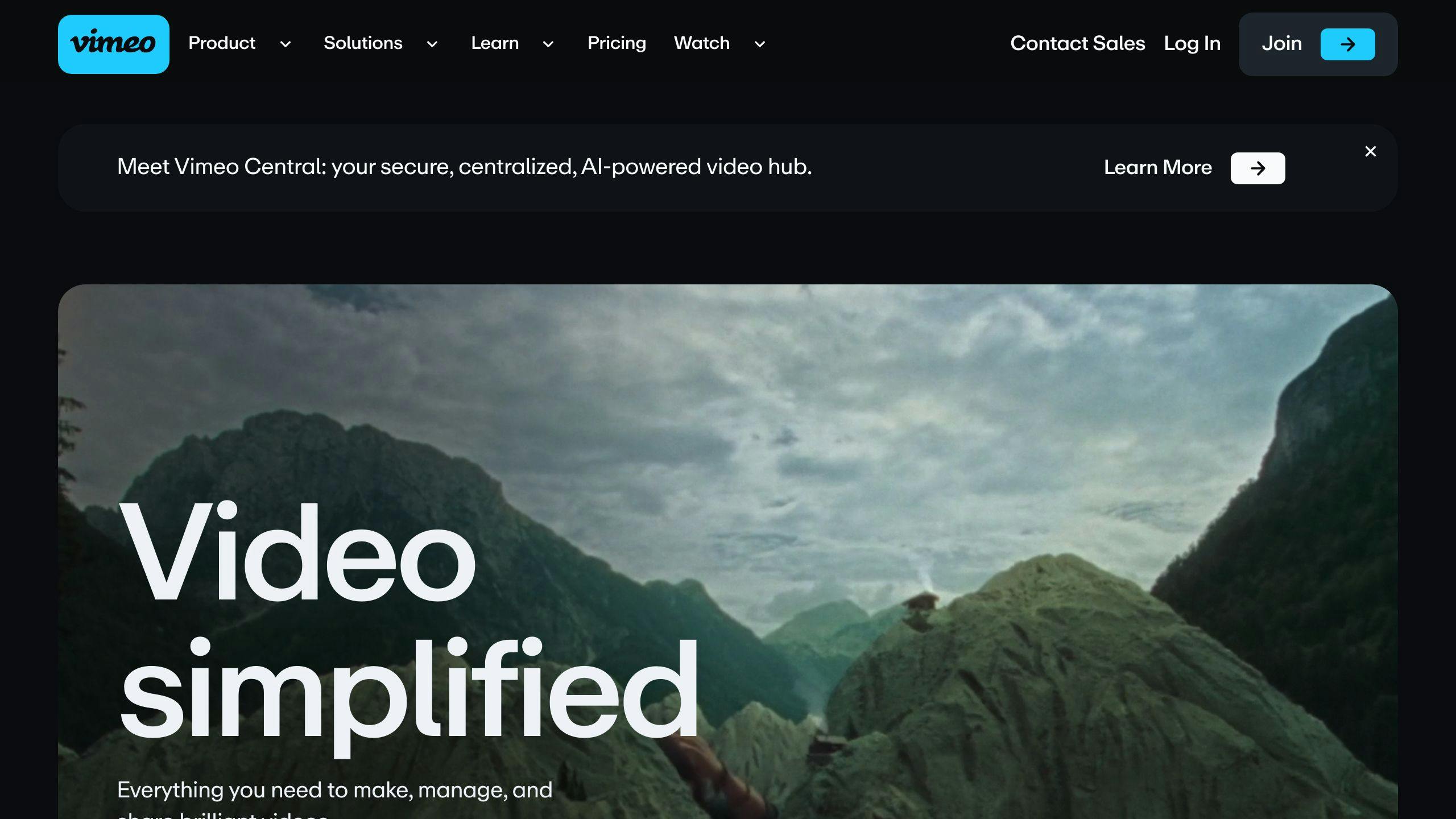
Monetization Options
Vimeo gives creators a few ways to make money:
- Vimeo On Demand: You can charge people to watch your special videos, either by asking for a monthly or yearly fee. Vimeo keeps 10% of what you make.
- Tip jar: If someone likes your work, they can send you a bit of money as a thank you.
- Affiliate links: You can make extra cash by recommending products in your video descriptions. If someone buys through your link, you get a commission.
Audience Reach
- Vimeo has about 200 million users. It's smaller than YouTube, but the people there are really into certain types of videos like short films and music videos.
- It's a good spot if you make content in popular areas on Vimeo because it's easier to find people who are into what you're doing.
Content Restrictions
- Vimeo is pretty chill about what you can post. As long as it's not illegal, you're good to go.
- Your videos can be watched by anyone, anywhere. There are no country blocks.
Creative Freedom
- You can change how your video player looks on Vimeo, like adjusting colors and adding your logo.
- Vimeo has groups where creators can meet and work together on projects.
Community Engagement
- There are groups on Vimeo where you can talk to other creators who like the same stuff.
- Vimeo picks some of the best videos and shows them off in a special section, which can help you get noticed.
2. Dailymotion
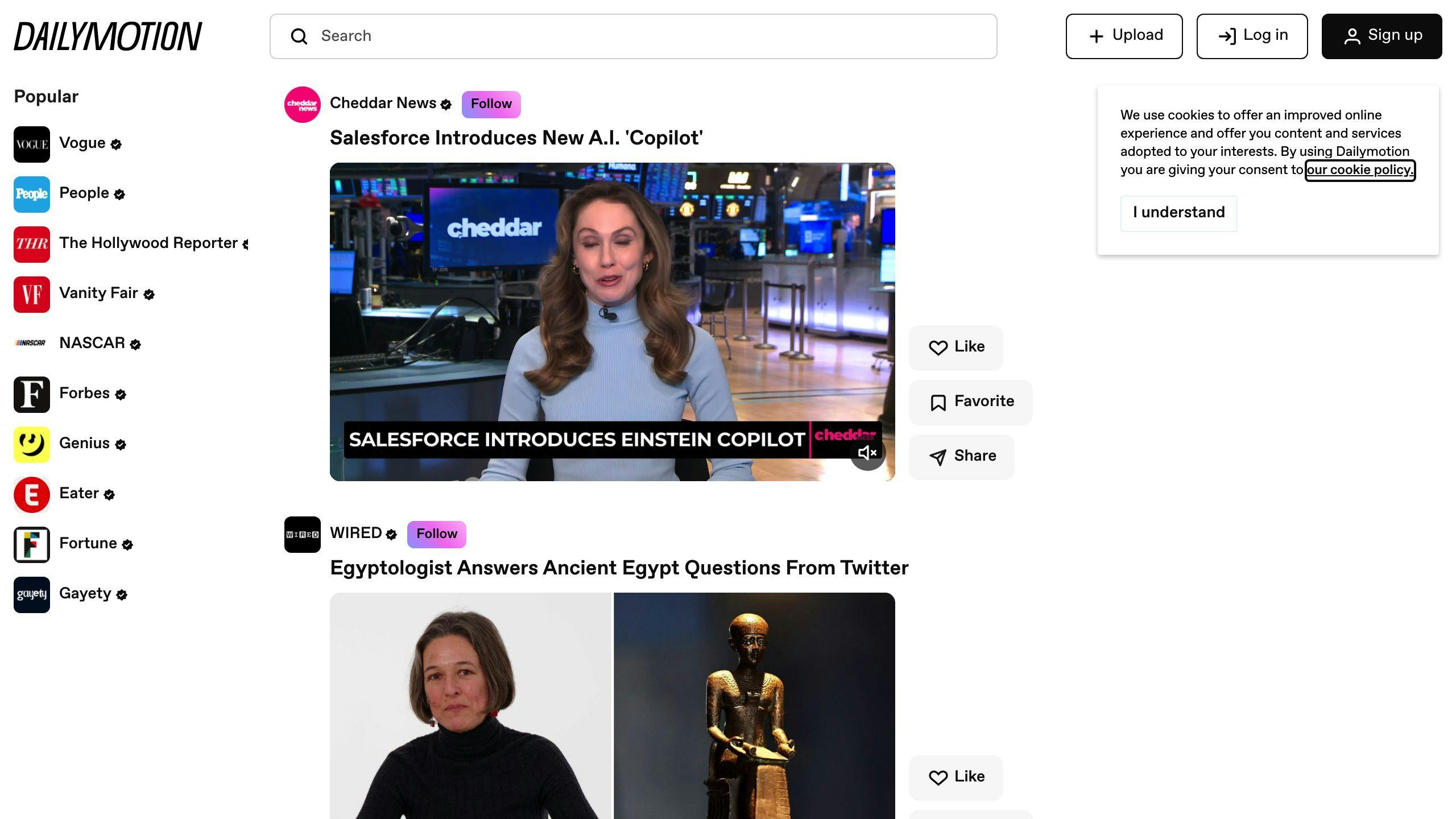
Monetization Options
- Revenue share from ads: Dailymotion lets creators earn money through ads on their videos. They usually give creators about 55% of the ad money.
- Tipping/donations: People can send you money directly, but you'll need to use other services like PayPal. Dailymotion doesn't have a way to tip inside their platform.
- Subscription fees: Right now, Dailymotion doesn't have a way for creators to make money through subscriptions.
- Affiliate links: You can put links in your video descriptions that earn you money if people buy things or sign up through them.
Audience Reach
- Dailymotion has about 300 million people using it each month. That's less than YouTube.
- The site is good for creators who make videos about music, sports, gaming, and entertainment because that's what their audience likes.
Content Restrictions
- Dailymotion is more laid-back about what you can post compared to YouTube. You're mostly free to post whatever, as long as it's legal.
- Videos on Dailymotion can be watched from anywhere in the world. There aren't any rules stopping people in certain countries from seeing your videos.
Creative Freedom
- You can change how the video player looks, like its color or adding your logo.
- There's a community on Dailymotion where creators can meet and talk to each other.
Community Engagement
- Dailymotion has groups based on different interests, making it easier for creators to find people who like similar things.
- They have a section for trending videos, which helps get your videos seen by more people.
3. Twitch
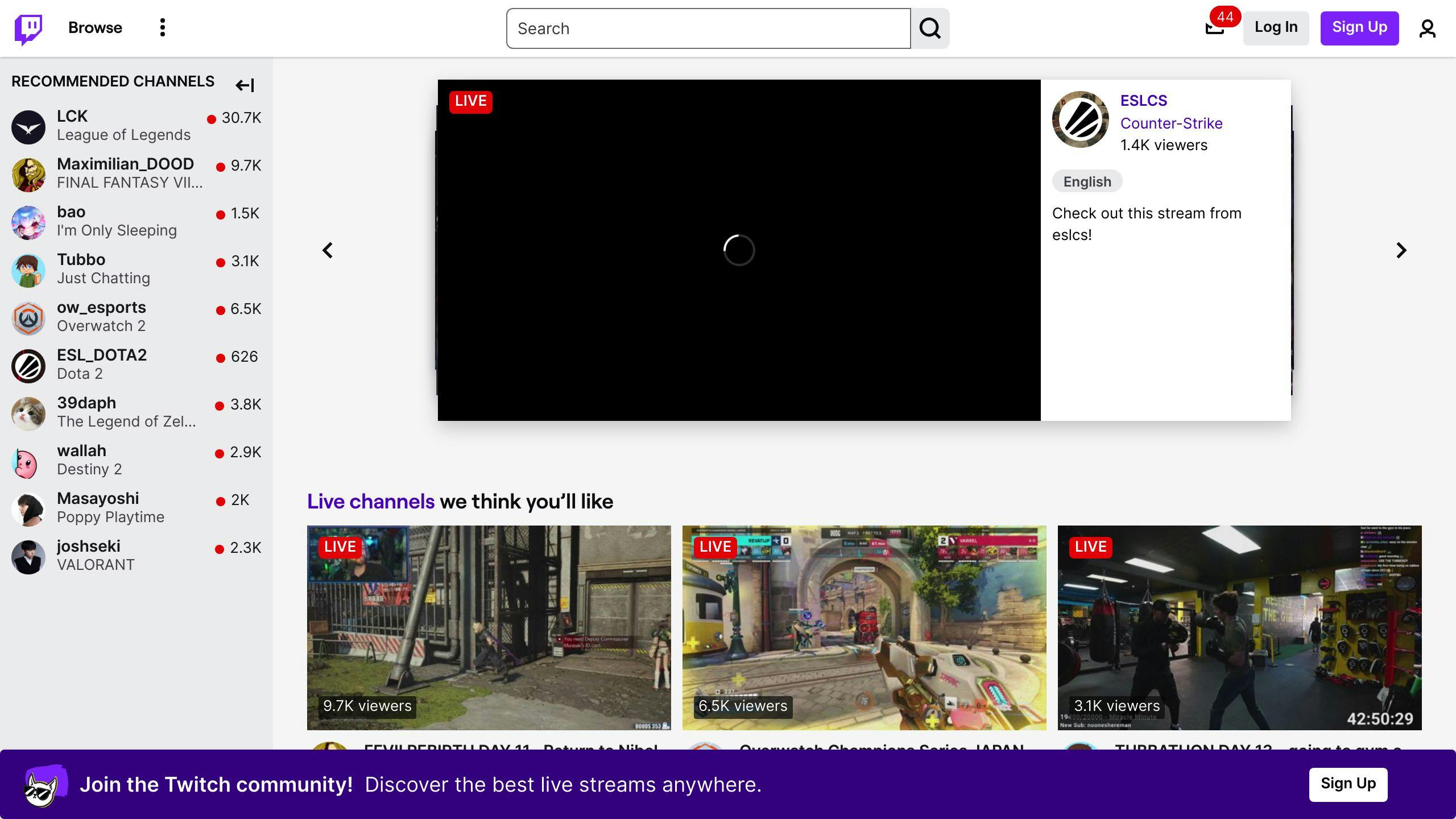
Monetization Options
- Revenue share from ads: Twitch lets creators make money by showing ads during their streams. They give you half of the ad money.
- Tipping/donations: Viewers can easily send you money directly on Twitch. This is a great way for fans to support their favorite creators.
- Subscription fees: People can pay a monthly fee to support you on Twitch. You get $2.50 for each person that subscribes. There are also more expensive options for fans who want to give more.
- Affiliate links: You can share links to products you like. If someone buys something through your link, you get a bit of money.
Audience Reach
- Twitch has around 30 million people coming to watch every day. It's especially popular with younger folks who like gaming, music, and creative stuff.
- It's easy to talk directly with your viewers on Twitch, which helps you build a close community around what you love.
Content Restrictions
- Twitch has rules against showing too much skin, violence, illegal stuff, and being mean. As long as your gaming or creative content follows the rules, you're good.
- Everyone around the world can watch Twitch streams. There aren't any big rules about where people can watch from.
Creative Freedom
- Twitch lets you change up your channel's look with different designs, pictures, and special chat icons. This helps you make your space unique.
- You can chat with viewers live during your streams, which makes it fun and interactive.
Community Engagement
- Twitch makes it easy to work with other creators. You can have guests or do streams together.
- You can use categories and tags to help people who like the same things find your streams. This helps bring together fans with similar interests.
4. Patreon
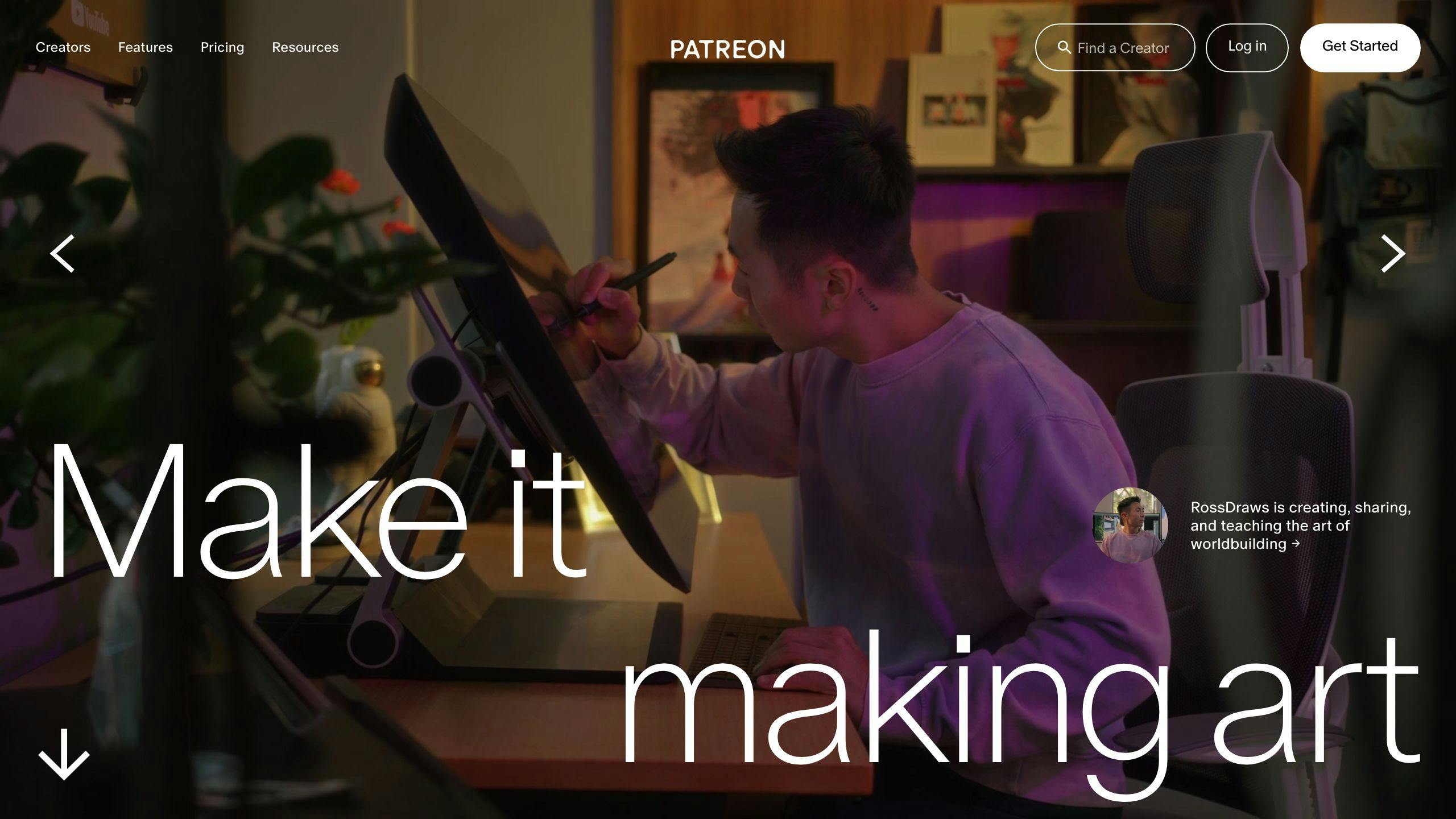
Monetization Options
- Patreon lets creators share special content with people who pay a monthly fee. You can set up different levels with unique rewards.
- Supporters, called patrons, give money every month to get access to this extra stuff. Creators usually get $2-5 for each patron every month. If you offer more, you can earn more.
- After Patreon takes its small cut, creators keep 92-95% of the money. This is a lot more than what you might get from ads on other platforms.
- You can also make money through other ways like selling merchandise, getting direct donations, or sharing affiliate links on Patreon.
Audience Reach
- 200,000 creators are on Patreon, with 8 million people supporting them.
- It's more for finding fans who will pay for special access than just getting lots of viewers.
- You can also use tools like Discord to chat and build a stronger community.
Content Restrictions
- You can post almost anything as long as it's legal and follows the rules. There are some limits on adult content.
- Patreon works all over the world. There's no blocking based on where you live.
Creative Freedom
- You're in charge of what you make, how often you post, and how you talk to your fans. You can also design your page your way.
- You get lots of tools to help you share your work and connect with your supporters.
Community Engagement
- You can chat, message privately, or use Discord to keep in touch with your fans.
- Share behind-the-scenes posts to show how you make your stuff.
- Work with other creators to make new things together.
5. TikTok
Monetization Options
- TikTok Creator Fund: TikTok pays creators for popular videos. How much you make depends on where you are and what you post.
- Tips: People can give you virtual gifts or money during live videos. You get to keep most of this.
- Affiliate links: You can put links in your profile or video descriptions. If someone buys something through your link, you earn a bit of money.
Audience Reach
- TikTok has more than 1 billion people using it every month. It's really popular, especially with younger folks.
- TikTok's smart system quickly figures out what you like and shows you videos that fit your interests. This makes it easier to find people who will like your videos.
Content Restrictions
- TikTok doesn't allow certain things like adult content, violence, or anything illegal. They're pretty strict about this.
- Some videos might not be available in certain countries.
Creative Freedom
- TikTok has some tools for making videos, but they're pretty basic. You can't do too much fancy stuff.
- You can work with other creators on TikTok using features like duets and stitches, which is fun.
Community Engagement
- Using hashtags and focusing on specific interests helps you connect with the right people.
- TikTok lets you talk directly to your fans through live videos and group chats.
6. Facebook Watch
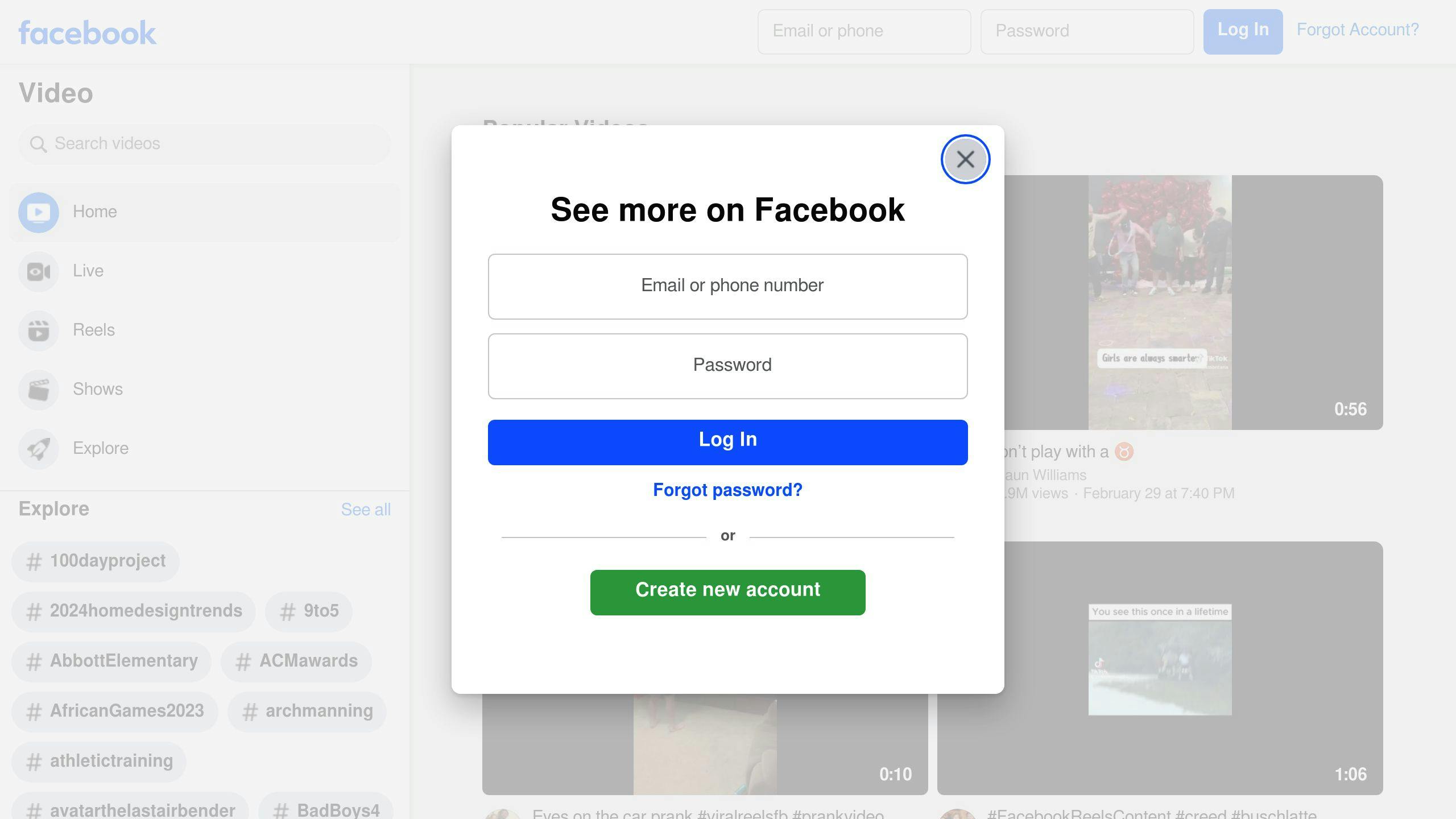
Monetization Options
- Revenue share from ads: Facebook gives creators part of the money from ads. Usually, creators get about 55% of what the ads earn.
- Tipping: People watching can send you money directly with something called "stars". Facebook doesn't take any of this money.
- Subscription fees: Facebook lets fans pay $4.99 a month for special content and perks through "Fan Subscriptions". After taxes, creators keep all the money.
- Affiliate links: You can put links in your videos that take viewers to products. If they buy something, you get a bit of money from the sale.
Audience Reach
- 2.9 billion people use Facebook every month. There's a big chance to reach a lot of people, but it's also easy to get lost among all the other content.
- Facebook is used by folks of all ages, but younger people aren't on it as much. It works best if your videos are for an older crowd.
Content Restrictions
- Facebook is strict about what you can post. It doesn't allow things like nudity, violence, or hate speech, and has even more rules for live videos.
- Some videos might not be shown in certain places because of local laws.
Creative Freedom
- Facebook has some tools for making your videos, but they're not as fancy as YouTube's. You can't do much to make your page look unique.
- It's easy to talk to your viewers through comments, live chat, or by making a Facebook Group.
Community Engagement
- Creating a Facebook Group is a good way to connect with fans and other creators.
- Facebook uses hashtags and recommends videos based on what people like and interact with. But, it can be tough for new creators to get noticed.
7. IGTV (rebranding to Instagram TV)
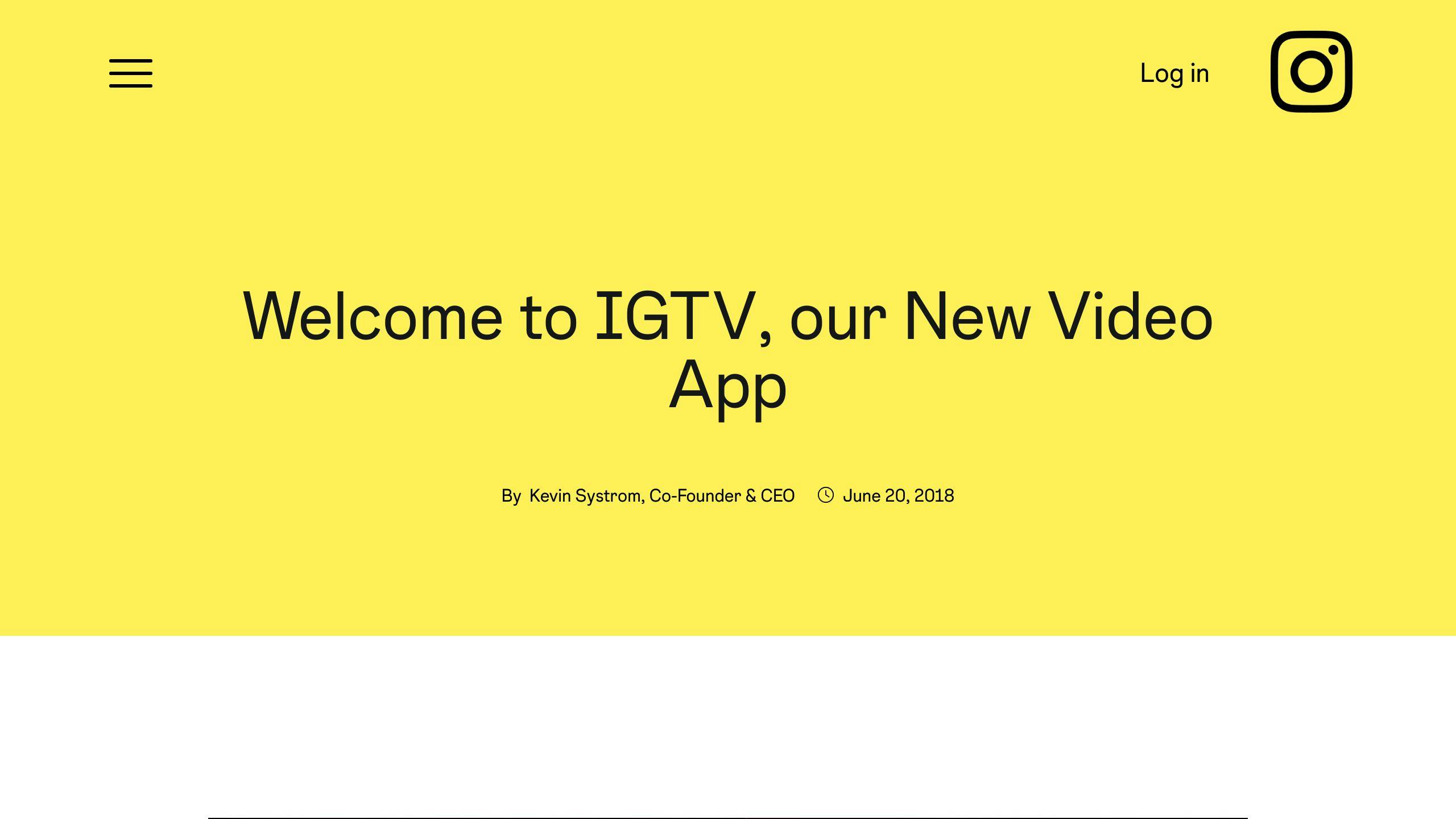
Monetization Options
- Revenue share from ads: You get to keep 55% of the money from ads shown on your videos.
- Tips: People can give you money or virtual gifts while you're live. You get most of that money.
- Affiliate links: You can share links in your profile or videos. If someone buys something through your link, you get a cut of the sale.
Audience Reach
- IGTV is part of Instagram, which has over 1 billion people using it every month. It's really popular with the younger crowd.
- Instagram shows people videos based on what they like, so your videos can easily find viewers who are interested.
Content Restrictions
- You can't post videos with adult stuff, violence, or anything illegal.
- Some videos might not be shown in certain countries.
Creative Freedom
- IGTV has some simple tools for making and editing videos, but you can't change much about how your page looks.
- You can work with other creators on videos, which is pretty cool.
Community Engagement
- You can use hashtags and talk about specific topics to connect with people who like your videos.
- You can also chat with viewers in live videos, in the comments, or in group chats.
8. DTube
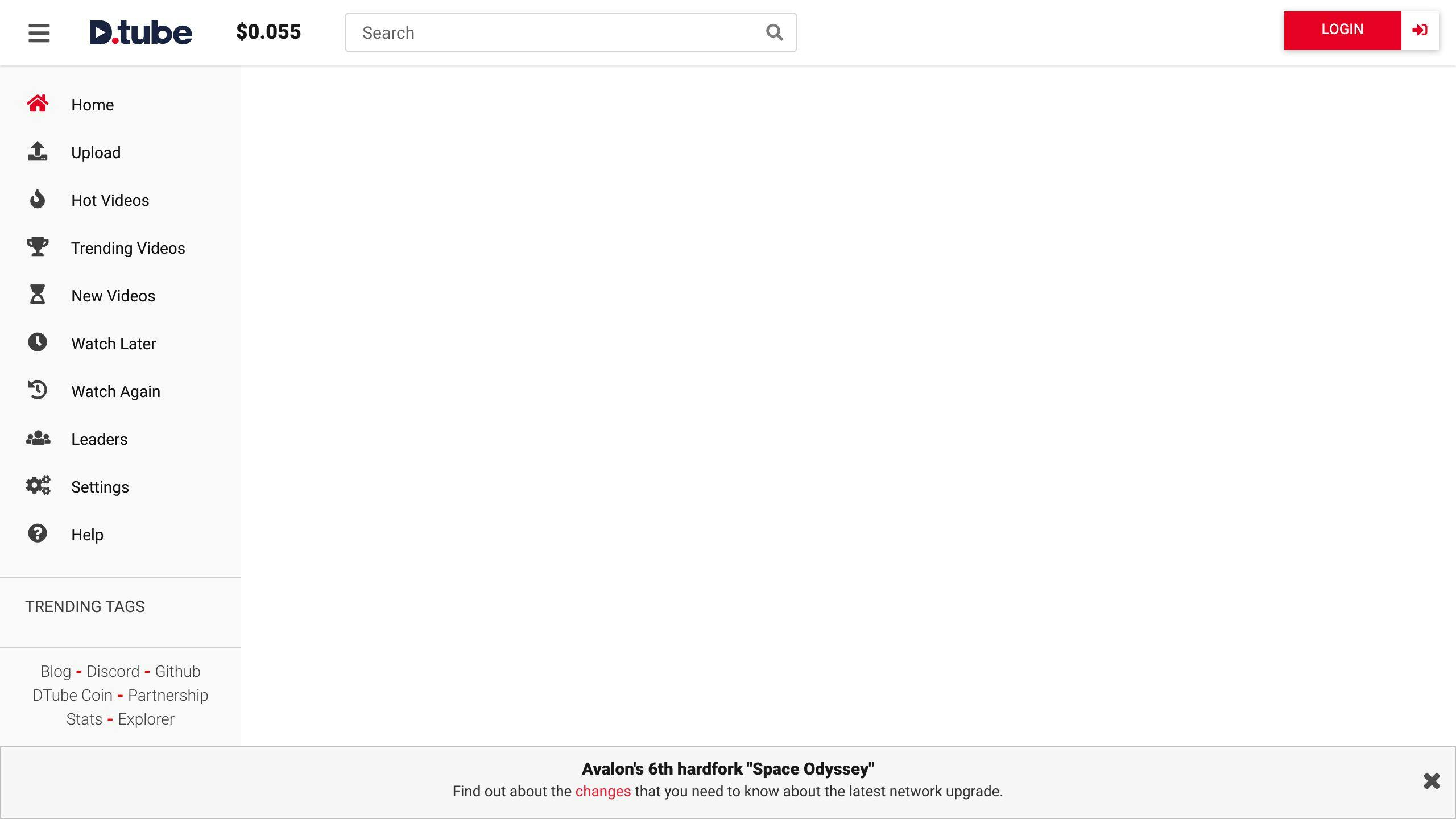
Monetization Options
- Revenue share from ads: DTube doesn't put ads on videos. Instead, it gives creators digital money (cryptocurrency) based on how popular their videos are. The more people watch and like your videos, the more digital money you make.
- Tipping/donations: Fans can give you digital money as a tip. There's no middleman, so you get to keep it all.
- Subscription fees: Right now, DTube doesn't have a way for fans to pay a monthly fee for extra stuff.
- Affiliate links: You can put special links in your video descriptions. If someone buys something after clicking your link, you earn some money from that sale.
Audience Reach
- DTube is pretty new and uses blockchain (a secure, online record-keeping technology), so it doesn't have as many users as YouTube. But it's growing and has over 100,000 people using it every month.
- Because DTube is all about not censoring content, it's great for creators who talk about tech, money, or controversial topics.
Content Restrictions
- DTube is pretty open about what you can post. As long as it's legal, you're good to go.
- Videos can be watched from anywhere in the world. There's no blocking based on where you live.
Creative Freedom
- You can tweak your channel a bit, but DTube's main thing is letting you control your content without giving you lots of fancy tools.
Community Engagement
- You can chat in the comments and join groups to talk with viewers and other creators.
- DTube helps people find your videos by showing which ones are popular or fit into certain categories.
Comparative Analysis
Let's look at how these different video platforms stack up against each other. We'll compare them based on how they let creators make money, how many people you can reach, what kind of rules they have, how much freedom you get to make your videos your way, and how you can connect with your audience. Here's a quick comparison:
| Platform | Monetization Options | Audience Reach | Content Restrictions | Creative Freedom | Community Engagement |
|---|---|---|---|---|---|
| Vimeo | Good options for making money through subscriptions, allows tipping, and you can earn from recommending products | Smaller audience of 200 million, but they really care about certain types of videos | Very open, you can post almost anything | You can change how your video player looks and find people to work with | Groups help you find people who like the same stuff, and a special section can make your videos more popular |
| Dailymotion | You get a good cut of ad money, tipping is outside the platform, and you can earn from product links | About 300 million users a month, great for music, sports, gaming, and entertainment | Pretty relaxed rules, just keep it legal | Some customization for your video player, and you can connect with other creators | Groups and a popular video section can help you get noticed |
| Twitch | Lots of ways to earn: ads, tips, subscriptions, and product links | 30 million people come every day, really into gaming and creative stuff | Mostly lets you post gaming or creative content if you follow the rules | Lots of ways to make your channel unique and fun | Easy to work with others, and tags help people find your stuff |
| Patreon | You can get monthly payments from fans, keeping most of the money | 8 million people support creators here, it's more about finding true fans | Very few restrictions, just keep it legal | Total control over your stuff and lots of tools to connect with fans | Direct chats and exclusive posts help you build a close community |
| TikTok | Pays creators for popular videos and lets fans tip during live videos | Over 1 billion users, great at showing your videos to the right people | Strict rules about what you can post | Basic tools for making videos, not much else | Hashtags and live chats help you talk to fans |
| Facebook Watch | You get a share of ad money, can receive tips, and fans can subscribe for special content | Huge audience of 2.9 billion, but it's easy to get lost | Lots of rules, especially for live videos | Not many ways to make your page stand out, but good for chatting with viewers | Groups and recommendations help you connect with fans |
| IGTV | Similar to TikTok - earns from ads, tips, and product links | Uses Instagram's huge audience to show your videos to interested people | Can't post adult or violent content | Basic video making tools, hard to be unique | Hashtags and live video chats help you engage with viewers |
| DTube | Pays in digital money for popular videos, allows fan tips, and you can earn from product links | New and growing, with over 100K users, good for uncensored content | Very open, post almost anything legal | More about controlling your content than fancy tools | Comments and groups help you talk to fans and other creators |
As you can see, each platform has its own pros and cons. Some are better for reaching a big audience, others for making money in different ways, and some give you a lot of freedom to create. There's no one "best" choice. It depends on what's important to you - reaching lots of people, making money, or having freedom in what you create. Using more than one platform can help you get the best of everything. With so many options out there, creators can find the perfect place for their videos.
Pros and Cons
Here's a look at the good and bad points of each alternative to YouTube we talked about:
Vimeo
Pros
- Offers several ways for creators to earn money directly from their audience
- You can pretty much post anything as long as it's not illegal
- It's easier to connect with people who like the same kind of videos as you do
Cons
- Has a way smaller number of viewers compared to YouTube
- Doesn't offer many options to make your channel stand out
Dailymotion
Pros
- Shares a fair amount of ad revenue with creators
- Has relaxed rules about content
- Has groups to help you meet other creators with similar interests
Cons
- Lacks direct tipping or monthly support options for fans
- Smaller viewer base than YouTube
- Limited ways to customize your channel
Twitch
Pros
- Lots of ways to make money, like tips, subscriptions, and ads
- Great for live interaction with viewers
- Helps people find your content with categories and tags
Cons
- Mainly focused on gaming and live streams
- Has more rules about what you can show
Patreon
Pros
- Lets you earn a steady income from fans every month
- You get to keep most of what you earn
- You have full control over what you create
Cons
- Reaches fewer people compared to other platforms
- Depends on finding fans willing to pay regularly
TikTok
Pros
- Has a huge number of users, over 1 billion
- Its smart system quickly matches your videos with interested viewers
- Offers tipping and affiliate links for earning
Cons
- Strict about what you can post
- Basic tools for making videos
- It's tough to stand out because there's so much content
Facebook Watch
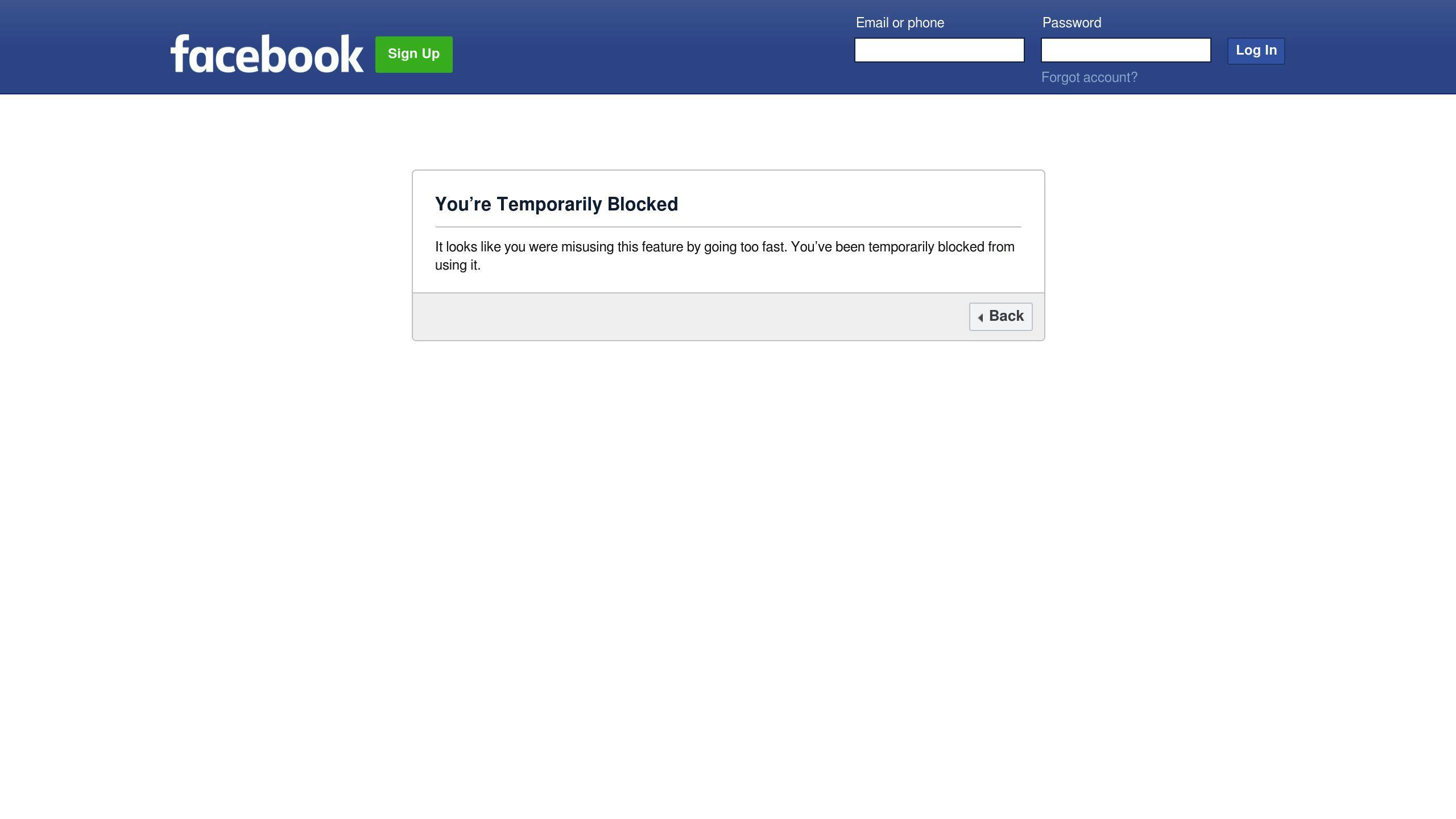
Pros
- Has a massive audience of 2.9 billion
- Offers various ways to earn money like ads, tips, and subscriptions
Cons
- Very strict about what you can post
- Hard for new creators to get noticed
- Offers limited tools for analysis and customization
IGTV
Pros
- Benefits from Instagram's large user base
- Makes it easy for viewers to find videos they like
Cons
- Limited ways to earn money beyond ads and tips
- Basic video making and customization tools
DTube
Pros
- Pays with cryptocurrency based on video popularity
- Very open about what you can post
- Allows direct tipping from fans
Cons
- Much smaller audience
- Limited information on video performance
- Basic options for community interaction
Choosing the right platforms depends on what matters most to you as a creator. Mixing different platforms might be the best way to get your videos seen by more people, have more freedom in making them, and earn more money.
sbb-itb-bc761f5
Beyond YouTube: Building a Diverse Content Strategy
Putting your videos on more than just YouTube can help you find more viewers, be more creative, and make more money. But, spreading your content around comes with its own set of challenges and big wins.
Reaching Diverse Audiences
Each platform has its own kind of audience based on what they like, their age, and more. Sharing your videos on different sites lets you connect with various groups of people. For instance:
- YouTube is great for reaching lots of people.
- Facebook Watch is good for connecting with an older crowd of nearly 3 billion.
- TikTok and IGTV are hit with the younger folks.
- Twitch is where tens of millions who love gaming and live streams hang out.
- Vimeo is loved by those who enjoy short films and music videos.
Making videos that fit each platform can help you get more views, subscribers, and money.
Mitigating Platform Risks
Putting all your eggs in one basket, like only using YouTube, can be risky if the site changes its rules. For example, YouTube has been criticized for taking away video money unfairly.
Uploading to different places can protect you from problems on any one site:
- Videos being taken down or limited
- Changes in how videos are suggested to viewers
- New rules that affect how you make money
Using various services can make your channel stronger.
Monetization Mix
Each site has different ways you can make money, which you can mix and match:
- YouTube - money from video ads
- Facebook - money from subscriptions and stars tipping
- Twitch - money from monthly subscriptions and cheers tipping
- Patreon - regular monthly payments
- TikTok/IGTV - money from virtual gifts
Earning from different sources can increase your total income. It also lets you focus on the sites that pay you the best.
Creative Freedom
Some sites have strict rules, while others let you do more. Sharing different types of content across sites lets you:
- Post edgier videos on sites with fewer rules, like DTube.
- Keep to more general content on stricter sites like YouTube.
- Share special behind-the-scenes stuff with fans on Patreon.
Using different platforms lets you be more creative.
Challenges of Multi-Platform Publishing
Reaching people across different sites can be tricky:
- More work to make and adjust content for each platform.
- Consistency in your message across channels can be hard.
- Analytics don't always combine data from different sites.
Planning well is key to doing well:
- Check out each platform’s audience and rules.
- Make a schedule for when to post on each site.
- Look at data for each site to see what works best.
- Share your content across sites when it makes sense.
Handling multiple platforms takes effort but can lower risks and open up new ways to make money.
Conclusion
Looking at other places to share videos besides YouTube can be really good for video makers. YouTube is still the biggest place for videos, but it's smart to share your stuff on other platforms too.
Here's a quick look at what makes each alternative to YouTube special:
Vimeo
- You can get money and support directly from your viewers.
- You're free to post almost anything you want.
- It's easier to connect with people who like the same things you do.
Dailymotion
- They share ad money with you if your videos do well.
- You can post a lot of different stuff without much worry.
- It's a good place if you make entertainment videos.
Twitch
- Live chats make your viewers feel more connected.
- You can make money in different ways, like through ads or viewer donations.
- It's great for finding people who like gaming and live shows.
Patreon
- You get regular money from people who really like your work.
- You can share special stuff just with your biggest fans.
- You have complete freedom in what you create.
TikTok
- It has a huge number of people using it, so your videos can get a lot of views.
- Their system helps your videos get seen by people who will like them.
- People can send you gifts and money during live videos.
Facebook Watch
- There are lots of people on Facebook, so you can reach a big audience.
- You can make money through ads, donations, and special subscriptions.
- You can grow a community of fans using Facebook groups.
IGTV
- It's part of Instagram, which a lot of young people use.
- You can make money from ads and live video gifts.
- Using hashtags helps the right people find your videos.
DTube
- It uses digital money to pay you for popular videos.
- You can say almost anything you want without getting in trouble.
- It's good for people interested in tech and new ideas.
Instead of just sticking to one platform, video makers should share their content on different sites. This way, you can reach more types of people, be more creative, and maybe even make more money.
The world of online videos keeps changing, and video makers need to be ready to try new platforms. There are a lot of places to share videos besides YouTube. Being open to trying new things can lead to great opportunities.
Related Questions
Is there an alternative to YouTube for creators?
Vimeo is a popular choice for people who make videos, like filmmakers, photographers, and musicians. It's known for its high-quality videos, including 4K Ultra HD, and its easy-to-use platform.
What should I replace YouTube with?
Dailymotion is a platform from France where you can share and watch videos. It's known for being simple to use and supports a variety of video types, making it a good place for both creators and viewers.
What is the next alternative to YouTube?
Dailymotion is another site like YouTube where you can find lots of different videos. When you go to the site, you can search for specific videos or look through collections put together by Dailymotion.
What is the substitute of YouTube?
Dailymotion is the closest thing to YouTube you can find. It's easy to use and offers a broad range of videos without limiting what you can see.



